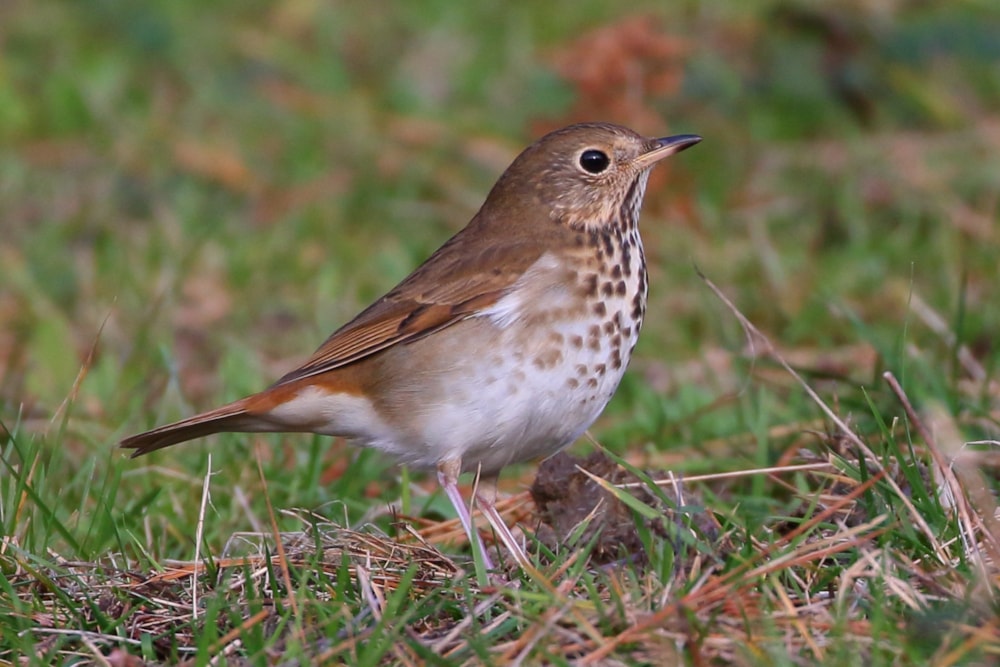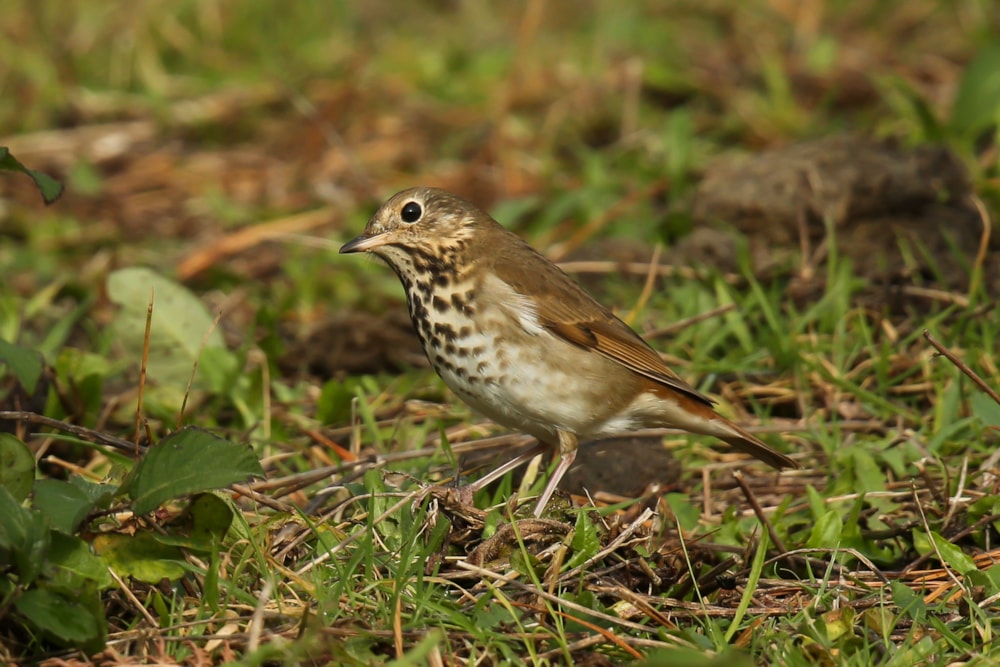Continued from Part 1.
A number of these themes of the autumn I've spoken about are inter-related. One of the major talking points in the south-west – indeed most of the country – during the month of October was the unremitting awfulness of the wind and rain. The fact that such a variety of scarce birds were displaced and came to Scilly was no doubt related to this, yet equally the brevity of the sightings also had something to do with the absence of sunshine and calm days that force the birds undercover.
The first two weeks of November were no better. Moving to St Mary's to help Star Castle Vineyards with their grape harvest, I walked down from the heights of the Garrison every morning to have my facial features rearranged by a savage north-westerly wind, bringing with it torrents of blistering hailstones and drenching rain. Somehow, Ashley Fisher picked up Scilly's second-ever Brown Shrike at Porthellick mid-month, but he was one of only three people who saw it, despite it being around for the best part of a week and half a dozen of us searching diligently in the area for several days afterwards.
Unfortunately, I wasn't one of the successful ones. The Blue Rock Thrush was my only new British bird of the autumn – Brown Shrike would have been another. Both were astonishingly chastening experiences in terms of taking for granted how easily I imagined seeing them when the news first broke of them turning up. Normally, one would expect to have to put some serious time and effort into one or two headline birds in a Scilly autumn, but that effort would be offset by having an equal number of 'easy' birds that would remain on view more or less constantly throughout their time on Scilly.

Graham's Hermit Thrush discovery may have come late in the autumn, but was a season-making find (Scott Reid).
Time was moving on and by the third week of November I was ready to cash out my chips for the autumn. In my 11 years on Scilly, I'd never been here at this time – usually I'd be found up the road in Cornwall, helping a farming friend cut hedges and storing up his wood supplies for the winter. By now I've usually taken off my birder's hat and have slipped into a more mellow late autumn mood where enjoyment of landscape, leaf-fall and common birds takes precedence over the stealth mode of operations in the previous seven or eight weeks.
On 18 November, the forecast suggest the first day in over a month when the wind would be down to less than 10 miles an hour, and the sun was due to shine all day without hindrance from rain or cloud. I saw it as an opportunity to just simply meld into the environment and enjoy an end of season casual stroll in the sunshine.
By mid-morning, the clement conditions had induced a sense of serenity that had been absent in the hurly-burly days of ferocious autumn weather. The thrush at the far end of the horse field at the start of the Kittydown trail – the one feeding out in the open in the crisp autumn sunshine – was probably just an optical illusion, but it looked unusually white about the underparts. At first I didn't lift my binoculars in its direction, turning to look at something else instead, but then a late penny dropped somewhere in my subconscious and it occured to me this bird at the top of the field was actually rather too small for a Song Thrush.
Still in relative slow-motion, still largely unaware of the drama about to unfold, I deigned to lift my binoculars in this odd bird's direction and as I did so, I clearly saw its tail slowly and deliberately raised about the horizontal line of the body and I knew in that instant: I'd gone and found a Hermit Thrush.

Plenty of birders, from both Scilly and the mainland, twitched the Kittydown Hermit Thrush (Lee Gregory).
If I've laboured my points and repeated myself to emphasize the nature of the autumn up to this stage, I apologise. I hope it all makes sense now. I suppose some of my hesitation in turning to the Hermit Thrush the instant I registered its oddity, was that I could hardly bring myself to believe – after all I've told you so far – that I could be presented with a bird so apparently content to be basking in the late autumn Scilly sunshine. Even as I made the phone calls, I knew this bird was set to please a lot of people (the 20 or so resident island birders for a start, and quite possibly some from the mainland) if it stayed.
And stay it did. Over the course of the following week I went on to enjoy several excellent hours with it. There were periods of hours when it went missing, and two days of torrential rain when it couldn't be found all day, but at other times it could be watched at nice, close range, feeding actively in the same two horse fields where I first noticed it, looking for all the world that it had lived there all its life. Which weather system it had arrived on and how long it had actually been here were hard to say. A few of us had certainly been looking in the immediate area for the Brown Shrike over the previous seven days and it was hard to imagine us all missing such an obvious bird.
The day it appeared there was the slightest hint of easterly in an otherwise windless day. Having watched it for two hours with my friends, I sauntered off and casually bumped into an Olive-backed Pipit just a few hundred yards up the road. There's autumn birding on Scilly in a nutshell for you: sometimes it can seem endlessly frustrating, when all your hours in the field come to naught, but if you hang around long enough and never give up there will be days when it will all seem ridiculously easy!
A day like that was a long time coming for me this autumn, but I can promise you it was worth it in the end.

Merely hours after finding the Hermit Thrush, Graham unearthed this Olive-backed Pipit (Kris Webb).


